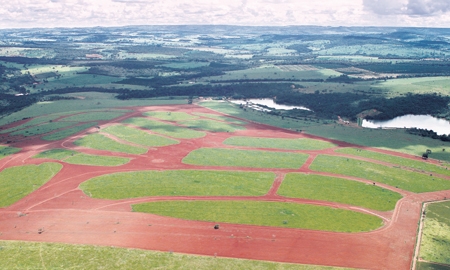The agribusiness sector in the central state of Goiás began to boom in the late 1970s for two reasons. First was the introduction of the Brachiaria grass, which originated in Africa. The grass adapted well to local conditions and turned previously barren land into lush grazing pasture for livestock. To take advantage of this newly available land, Zebu cattle from India were imported in huge numbers. This particular breed of cow, adapted to high temperatures, thrives in Goiás and is farmed for both dairy and beef. The introduction of rice farming also had a great effect. Since the 1970s, the Brazillian Cerrado, a vast tropical savanna occupying a large portion of the state of Goiás, was increasingly exploited; its climate is ideal for rice production.
Secretary of Agriculture Antonio Flavio Camilo de Lima is responsible for maintaining agricultural policy, generating wealth through sustainable agriculture and development of the labour force. He comments: “We are committed to promoting competitiveness so that importers have access to our products.”
Chief among those products are soy, meats, sugar, cotton and coffee.Also, the country as a whole is the world’s leading producer of industrial tomato products, and Goiás is responsible for 30% of that production, and for more than 50% of the processing carried out in the country
Today Goiás food production has become industrialized, largely due to agricultural research and technological development led by EMBRAPA (Empresa Brasileira de Pesquisa Agropecuária). The result is a solid knowledge of the technology required for agribusiness, which also attracts a large number of farming equipment manufacturers to the region.
The technology is vital, according to Governor of Goiás Marconi Perillos: “In recent years, agriculture and livestock farming have become strongly diversified, and livestock farming production today is far better structured, more intensive than extensive, thanks to the arrival of new technology.”

0 COMMENTS